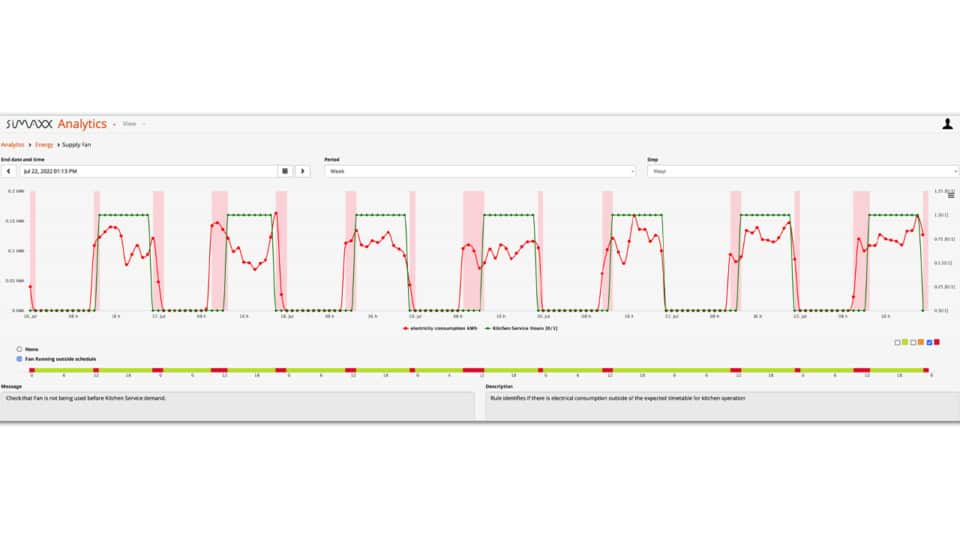Energy monitoring & procurement
Leverage advanced technology and sophisticated data analytics to fine tune energy consumption, mitigate costs, and elevate the overall operational efficiency within buildings
Achieving and maintaining energy efficiency is an ongoing and continuous process
A full-scale energy monitoring and targeting system is one of the most invaluable options you have for tracking your energy performance, especially as the owner of a plant or another large industrial business/property. It reduces your carbon footprint, break down your energy usage, and provide guidance toward new energy-efficiency measures that can eliminate waste in the long term. Ensure full compliance with ISO 50001 requirements
Step 1
A process starts with a basic audit. Once you understand your existing pattern of energy use habits and the energy costs from your wasted energy, you can employ new energy management control techniques to change your expected consumption.
Step 2
Analyse this data to explain excessive energy consumption, highlight potential energy consumption trends, and help your business diagnose specific areas where energy consumption is higher than average.
Step 3
Develop energy consumption limits as baselines, taking into account your current performance and the overall energy consumption your business or property requires to function.
Step 4
Determine future energy consumption performance targets using these baselines and your previous data. This includes unique targets for areas with unexpectedly higher energy consumption than average.
Step 5
Monitor your new energy consumption rates against your targets and performance metrics. Identify areas where your energy use fluctuates or where you produce a lot of wasted energy. Observe any new guidelines you have set for yourself in terms of energy use
Designed to help you save
Excessive energy use cost a lot. Services like this are focused on reporting your energy costs and energy use trends, breaking down the potential benefits and savings of more efficient energy management, and offering solutions to keep your energy consumption level at a more reasonable base line. This can be an early warning system for high energy costs or a way to manage your current energy consumption.
Energy monitoring
Automated data collection
Compatibility with existing energy efficiency monitoring tools and solutions, as well as Internet of Things devices allows for automatic data gathering without the need for manual input.
IoT device integration
Smart building platforms incorporate various sensors and IoT devices to monitor energy usage across different systems, such as lighting, HVAC (heating, ventilation, and air conditioning), and electrical equipment.
Visualisation dashboards
Users, such as facility managers or building operators, can access user-friendly dashboards that display energy usage metrics, trends, and alerts. This helps in making informed decisions to enhance energy efficiency.

Demand response
Automated energy consumption alerting
Tyrrell Analytics platform can be adjusted and configured to track wasted energy, observe the specific targets you are monitoring, and provide real-time alerts when custom thresholds are met. System sends out alerts whenever any single point in your production line exceeds your expected energy usage limits.
Integration with utilities
Integrate with utility providers to participate in demand response programs, allowing buildings to contribute to grid stability and potentially earn incentives for reducing energy usage during peak times.

Procurement optimisation
Market intelligence
Smart building platforms may provide real-time market intelligence on energy prices and market trends. This information helps in strategic decision-making related to energy procurement.
Optimised purchasing
By analysing energy market conditions and a building’s historical usage patterns, the platform can recommend optimal times to purchase energy, potentially resulting in cost savings.
Contract management
The platform may assist in managing energy procurement contracts, ensuring that the terms and conditions align with the building’s operational needs and financial goals.

Integration with building systems
Interconnected systems
Smart building platforms often integrate with various building systems, such as Building Management Systems (BMS), to coordinate energy usage based on occupancy, weather conditions, and other factors.
Automation and control
Automation features allow the platform to control equipment and systems dynamically to optimize energy consumption without sacrificing occupant comfort or operational needs.

Reporting and analytics
Customised reports
Users can generate customised reports that provide detailed insights into energy usage, cost savings, and the impact of energy efficiency measures.
Energy efficiency analysis
Target specific areas for reporting and deeper monitoring. From there, you can discover remedial actions to correct energy usage, sift through collected data to find out which fixes should be implemented, and get recommendations for how to approach your latest energy problems.
Historic data
Having easy access to so much historical data allows you to achieve full monitoring of your energy performance. You can use your entire energy efficiency history to form baselines and figure out expected results, using any point of data you need without the worry of it being lost or corrupted.

Designed to help you save
Energy monitoring and procurement services in smart building platforms leverage technology to gather, analyse, and act on data to optimise energy usage, reduce costs, and contribute to sustainability goals. These services play a crucial role in modern building management, helping organisations make informed decisions and achieve greater efficiency in their operations.
